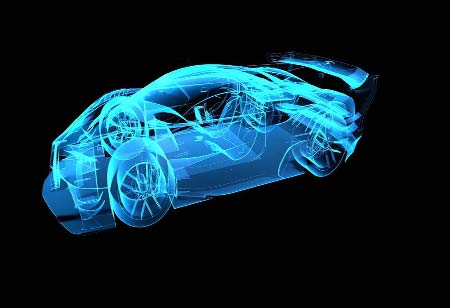Thank you for Subscribing to Auto Business Outlook Weekly Brief
The Future of Automotive Sector Transforming Businesses
Technology's rapid development has created many opportunities for innovation.

By
Auto Business Outlook | Monday, April 10, 2023
Stay ahead of the industry with exclusive feature stories on the top companies, expert insights and the latest news delivered straight to your inbox. Subscribe today.

Industries have been increasingly focusing on developing unique and innovative products designed to address current needs while incorporating futuristic features. The automotive industry is no exception.
FREMONT, CA: Technology's rapid development has created many opportunities for innovation. Despite the global economic downturn brought on by the COVID-19 pandemic, companies are working to recover. Businesses are putting more of an emphasis on creating distinctive products with cutting-edge features that meet market demands nowadays. There is no exception in the automotive business.
Automakers and original equipment manufacturers (OEMs) have pushed themselves for decades to provide clients with a wide selection of vehicles that are outfitted with the newest technologies. Opportunities in the automotive sector appear to be almost limitless. However, in the long run, electrification and connectivity are expected to further propel the automobile sector forward. Technology and changes in policy are the key forces behind these movements.
The development of emerging markets, the accelerated adoption of new technology, environmental policies, and shifting consumer ownership preferences are all factors that are driving significant changes in today's economies. Automobiles will undergo a similar revolution to other industries that have already been impacted by digitization, increased automation, and new business models. Four disruptive technology-driven trends are emerging in the automobile industry as a result of these factors: diversified mobility, autonomous driving, electrification, and connection.
In the automotive sector, electrification is the process of switching out an automobile's internal combustion engine (ICE) for an electric battery. Battery electric vehicles (BEVs), sometimes known as electric vehicles (EVs), are cars that have this type of engine. One of their key advantages is that they help reduce greenhouse gas (GHG) emissions, which governments and politicians strongly support through a variety of programs and regulations. The availability of electric vehicles is anticipated to increase internationally. Some nations even intend to outright prohibit the sale of diesel automobiles, therefore eliminating all rivalry for electric vehicles.
More than ten million electric vehicles will be in use worldwide by 2023. According to the Net Emissions by 2050 Scenario, this figure is anticipated to increase to 300 million automobiles by 2030. OEMs are likewise adamant about producing more electric vehicles. The number of completely electric vehicles is anticipated to reach roughly 29 million, with the global EV production share of total vehicle production rising to 62 percent in 2030.
The majority of the underlying developments in the car sector are being driven by the accessibility and adoption of cutting-edge technological solutions. Advanced technological solutions are used in connected cars, sensors, electrification, and new business models (such as mobility-as-a-service). Industry analysts claim that the automobile sector has to concentrate on that in the future. It appears challenging for the entire sector, from suppliers to automakers, to maintain existing operations at a profit while also expanding its capacity to handle these new developments. Companies need to maintain the correct balance between maintaining a successful and stable business while also pioneering the disruption of their business models.
Some industry leaders assert that flexibility and innovation will be crucial when it comes to the specific challenges facing the future direction of the automotive industry, even though many automakers and suppliers learned from the past to help them survive recent disruptions and make their existing operations more efficient.
To reconcile the necessity to manage a profitable business with creating innovative products and business models, automotive businesses are focusing on strategic priorities:
Customer centricity: Many automakers and dealers found innovative ways to communicate with customers during the pandemic, and they intend to deepen this relationship.
Mobility services: Brand and dealership loyalty will gradually give way to integrated, convenience-driven services and related mobility possibilities. The future of mobility will be centered on new pay-per-use and subscription-based business models.
Connected cars: As the mobility landscape changes, companies need to become smarter and more connected as they design and manufacture vehicles.
Engaging with a changing workforce: As a result of the major changes in the skills that automotive companies require, businesses must revise their recruitment, retention, reskilling, and retirement strategies. The traditional skill sets of the automotive industry, which were highly reliant on engineering, are transforming and will soon require software expertise throughout the whole automotive value chain.
A fast-moving market and changing customer demands call for automotive companies to innovate and develop solutions rapidly.






